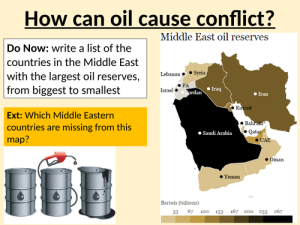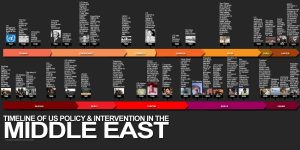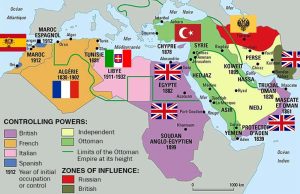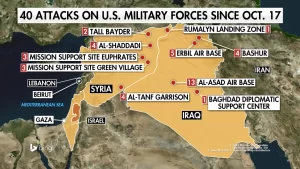The real motives behind past and present wars in the Middle East are complex and multifaceted, but they generally revolve around the following key factors:

1. Control of Energy Resources (Oil & Gas)
- The Middle East holds a significant portion of the world’s oil and gas reserves. Countries and corporations have long sought control over these resources for economic and geopolitical leverage.
- Wars like the Iraq War (2003) had strong ties to oil interests, as Iraq sits on vast petroleum reserves.
- Pipeline politics plays a role as well, with competition over routes for oil and gas exports, such as the conflict over Syria’s pipeline corridors.
2. Geopolitical Power & Global Hegemony
- The Middle East is a strategic location for global superpowers. The U.S., Russia, China, and European nations have all sought influence in the region.
- The U.S. military presence (bases, alliances, and interventions) ensures continued dominance in global trade and resource access.
- Proxy wars (e.g., Syria, Yemen) have been fueled by rivalries between the U.S., Russia, and regional powers like Iran and Saudi Arabia.
3. The Petrodollar System
- The global economy has been tied to the U.S. dollar through oil sales (petrodollar). Nations like Iraq (Saddam Hussein) and Libya (Muammar Gaddafi) sought to break away from the dollar system, which may have contributed to Western-led military actions against them.
4. Religious and Sectarian Conflicts
- Sunni vs. Shia divisions have been exploited by external powers to divide and control the region.
- Iran (Shia-led) and Saudi Arabia (Sunni-led) are locked in a power struggle, backing opposing groups in conflicts such as those in Syria and Yemen.
- Extremist groups (ISIS, Al-Qaeda) have been used as both tools and threats by different actors to justify interventions.
5. Israel and Regional Security
- Israel’s security and regional dominance play a major role in Middle Eastern conflicts.
- U.S. foreign policy heavily supports Israel, while groups like Hezbollah, Hamas, and Iran challenge its presence.
- The wars in Iraq, Syria, and Lebanon have had indirect connections to securing Israel’s geopolitical interests.
6. Arms Industry Profits
- Defense contractors and military-industrial complexes benefit from prolonged conflicts.
- The U.S., Russia, and other nations sell billions in weapons to Middle Eastern countries, fueling an ongoing cycle of violence.
7. Destabilization for Regime Change
- The U.S. and Western allies have historically overthrown governments to install favorable regimes (e.g., Iran in 1953, Iraq in 2003, Libya in 2011, attempted in Syria).
- Destabilizing governments allows foreign powers to control resources and influence policy.
8. Suppression of Independent Economic Development
- Nations that sought independent economic paths, such as Libya’s gold-backed dinar plan or Iran’s resistance to Western financial systems, have faced economic sanctions and military interventions.
9. Distraction from Domestic Issues
- Wars in the Middle East often serve as distractions from domestic crises in the U.S. and other Western nations.
- Military interventions justify increased government control, surveillance, and defense spending.
In summary, Middle Eastern wars are driven by a mix of economic greed, geopolitical strategy, energy control, financial manipulation, and deep-rooted ideological struggles. The mainstream narratives often obscure the deeper interests at play.


